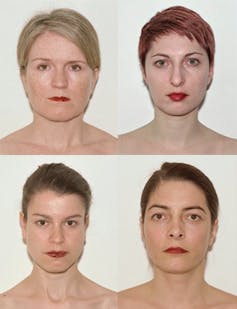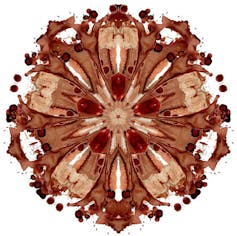I’m big on textures. I won’t eat lychees for example, just in case my tongue accidentally slips inside one. Ditto eggplant and the whole oral exfoliation-thing.
And I’d rather wear 46 layers of less-warm clothing than anything made of wool, so passionately do I hate the feel of sheep against my skin.
So you can imagine my visceral response when seeing a woman with a skein of wool inside her vagina. Oh my bleeping God, the horror.

Friday night. Days before I’d even heard of the video. One of those delightful past-midnight conversations. Tentatively he asked, “would you say you have some problems balancing your politics with your personal life?”
Ha! And he scarcely knows the half of it!
Watch the YouTube clip if you’re brave enough: the gist is a woman knitting on the 28 days of her cycle with wool stored inside her vagina. With each few rows she yanks out a little more thread.
I hadn’t listened to the Radio National chat about the project nor caught the SBS show. Two text messages this morning advised, apparently, that I’d been missing out.
I’m not particularly squeamish. Certainly not in matters menstrual. I spent a year writing a book about it. I’ve spent twenty-bloody-years experiencing it. I can watch menstrual-themed porn without recoiling and hell, I was cheering on Hank (David Duchovny) as he happily seduced the bleeding Mrs Patterson (Justine Bateman) in an episode of Californication.
So why did I abort the vaginal-knitting video halfway through? Why did I send one of my best friends an “I think I’m going to be sick” text message? Why am I not even nearly comfortable with blood-stained wool being knitted into a scarf?

With age I’ve gotten better at compartmentalising the different aspects of my identity. Doing so isn’t always easy, but in my defence, I can manage to get out of bed most mornings. Needless to say, my reaction to the video has me smothered in guilt.
Surely I’m a better feminist than that. Surely my live-and-let-live-ness is fine with as many bodily-fluid-stained craft projects as any woman can conjure. Surely I needn’t join the throng of creeps and misogynists out there seeking opportunities to malign the bodies of women?
And that would, of course, all be good and fine and well if I didn’t - albeit stupidly - click play. I can’t unsee that video.
My objections started with the wool. If it’s that itchy against my arms and shows no mercy against my neck, the thought of it anywhere near my genitals causes the tightest of pelvic clenches.
Granted though, it’s more than just the wool.
I lack an activist streak. I’m not a boycotter or a marcher or a placard-making rebel-rouser. I’m just not. I write and I talk and I teach and that’s enough.

And without the firebrand gene I feel no need to paint with my blood, dance it out over a white canvas or use it as lipstick, and thus - as hard as I try - I can’t relate to the video.
More than just not relating to it however - afterall, I don’t relate to a lot of art, but can see value in it - I was simply confused.
Much menstrual art - like a lot of art generally - is about challenging our taboos. Challenging our preconceptions. Challenging our queasiness.
I get that. And sure, it sort of works on that level.
But the artist claims to be wanting to normalise the vulva, the vagina, the menstrual cycle. To somehow prove that it’s not scary, or gross, or demonic.
Really?
Personally, I’m all about normalising bodily stuff - sex and masturbation and menstruation, just for starters - and I’m far from convinced by this project. Which begs the question: does such a project consciousness-raise or further inflame prejudices? Equally, does almost-quaint shock-tactics and exhibitionism help or hinder a political message?

